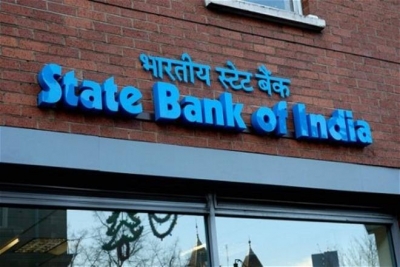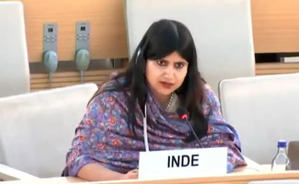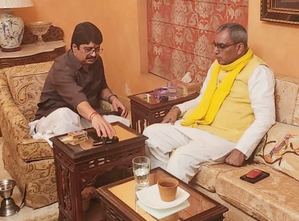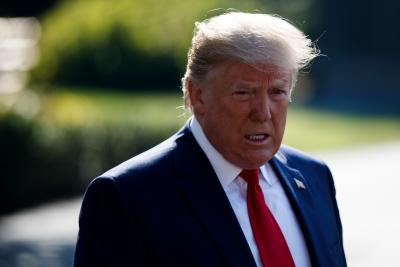New Delhi, Feb 27 (IANS) Along with the sharp decline in poverty in India, there has also been a marked reduction in the rural-urban income divide in the country, according to an SBI Research analysis of a Consumer Expenditure Survey released on Tuesday.
Rural Poverty has staged a significant 440-basis point decline since 2018-19 and Urban Poverty a 170-basis point decline post-pandemic, which shows that the government initiatives for promoting the welfare of the bottom of the pyramid are having a significant beneficial impact on rural livelihood, the report states.
Rural Poverty is now at 7.2 per cent (25.7 per cent in 2011-12 while Urban Poverty is at 4.6 per cent (13.7 per cent in 2011-12), official data show.
The report further states that India is becoming more aspirational as indicated by the increasing share of discretionary consumption (like spending on beverages, intoxicants, entertainment, durable goods, etc.) in rural and urban areas. The speed of aspiration is swifter in rural areas as compared to urban areas
The SBI report states that the difference between rural and urban monthly per capita consumption expenditure (MPCE) is now at 71.2 per cent, a rapid decline from 88.2 per cent in 2009-10. Around 30 per cent of the Rural MPCE is explained mainly due to steps taken by the government in terms of DBT transfers, investments in building of rural infrastructures, augmenting farmer’s income, all together improving the rural livelihood significantly.
Enhanced physical infrastructure is enabling two-way rural-urban mobility, which is the prime reason for the incrementally shrinking horizontal income gap between the rural and urban landscape and the vertical income gap within rural Income classes, according to the SBI report.
The states once considered laggards are showing the maximum improvement in rural and urban gap. States like Bihar, Uttar Pradesh, Madhya Pradesh are showing increasingly the impact of these factors, the report adds.
The bottom half of the rural pyramid are now having consumption patterns mostly converging to urban counterparts.
The report also states that revised MPCE weights in CPI computation could help India real GDP growth for FY24 to top 7.5 per cent.
Other highlights:
*Rural and Urban consumption are growing, on an average, at nearly the same growth rate (2.66 per cent for rural, 2.59 per cent for Urban) across classes. Using the statistical equivalent of Gini Coefficient, Horizontal Consumption Inequality between Rural and Urban across fractiles has declined from 0.560 to 0.475
*Urban Rural gap as a percentage of rural consumption is on a declining trend. It has declined from 90.8 per cent in 2004-05 to 71.2 per cent in 2022-23 and we believe, is projected to further decrease to 65.1 per cent in 2029-30
*In the lowest segment, urban consumption is only 46 per cent more dissimilar than the rural counterpart. Across fractile classes, urban consumption is only 68 per cent more dissimilar than rural counterpart, a number much less than the all India average. This indicates the bottom half of the rural pyramid are now having MPCE patterns mostly converging to Urban counterparts.
–IANS
sps/dpb
Disclaimer
The information contained in this website is for general information purposes only. The information is provided by TodayIndia.news and while we endeavour to keep the information up to date and correct, we make no representations or warranties of any kind, express or implied, about the completeness, accuracy, reliability, suitability or availability with respect to the website or the information, products, services, or related graphics contained on the website for any purpose. Any reliance you place on such information is therefore strictly at your own risk.
In no event will we be liable for any loss or damage including without limitation, indirect or consequential loss or damage, or any loss or damage whatsoever arising from loss of data or profits arising out of, or in connection with, the use of this website.
Through this website you are able to link to other websites which are not under the control of TodayIndia.news We have no control over the nature, content and availability of those sites. The inclusion of any links does not necessarily imply a recommendation or endorse the views expressed within them.
Every effort is made to keep the website up and running smoothly. However, TodayIndia.news takes no responsibility for, and will not be liable for, the website being temporarily unavailable due to technical issues beyond our control.
For any legal details or query please visit original source link given with news or click on Go to Source.
Our translation service aims to offer the most accurate translation possible and we rarely experience any issues with news post. However, as the translation is carried out by third part tool there is a possibility for error to cause the occasional inaccuracy. We therefore require you to accept this disclaimer before confirming any translation news with us.
If you are not willing to accept this disclaimer then we recommend reading news post in its original language.













